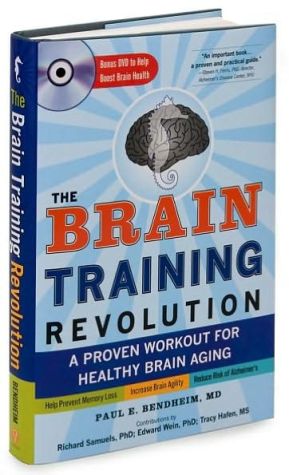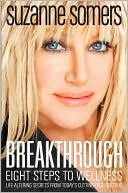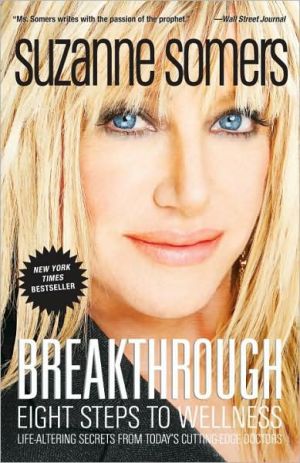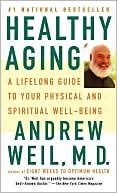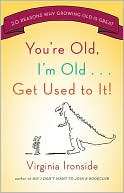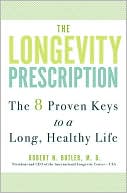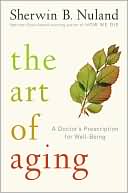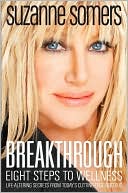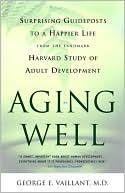The Brain Training Revolution: A Proven Workout for Healthy Brain Aging
"An important book... a proven and practical guide."\ —Steven H. Ferris, PhD, director, Alzheimer's Disease Center, NYU\ Regain, Retrain, and Maintain Your Brain\ Help Prevent Memory Loss - Increase Brain Agility - Reduce Risk of Alzheimer's\ Because memory loss is the number one health concern of Americans over forty-five,The Brain Training Revolution is a valuable weapon on the battleground of aging. You have the power to grow and strengthen your brain, minimize the severity of...
Search in google:
Repair, Retrain, and Maintain Your Brain Age-associated memory loss is the number one health complaint of Americans over 60, but loss of brain cells is not something you have to just accept—mental exercise can create and sustain new cells in 50-, 60-, 70-, and even 80-year-old brains. The result? A reduced risk of memory loss and Alzheimer's disease and more robust memory function overall. Train your brain with Dr. Paul E. Bendheim's proven mental exercises! For the nearly 50% of Americans over 40 who worry about memory loss, an innovative step-by-step guide and DVD to help readers boost brain health The Brain Training Revolution offers readers a unique three-part prescription for brain and memory health based on the latest scientific research. By focusing on certain aspects of nutrition, physical fitness, and mental exercise, The Brain Training Revolution outlines a plan to maintain brain health, blunt the assaults of age-related memory loss, reduce the risk of Alzheimer's disease—and even restore some memory loss. No other brain book boasts the kind of bonus DVD included here, featuring an introduction to each part of the program and several interactive cognitive exercises. The book also offers color spreads of cognitive exercises for readers seeking extra mental agility. With contributions by experts in brain nutrition, cognitive science and physical exercise, this book provides readers with a way to train their brains for better memory, better learning abilities, better decision making and overall better brain function.
"There is no doubt, those of us who expand our minds, exercise our brains and our bodies, and give them good food, feel better, perform better, remain independent longer. We age better." —Linda, Scottsdale resident, age 70\ Ed and Linda are a retired American couple living in Scottsdale, Arizona, a colorful, cactus-studded desert community near Phoenix. Ed is 81 and Linda is 70. When I first met them in 2007, they had concerns that are familiar to almost everyone older than 50. They had noticed that, as they aged, their minds seemed to work less quickly than before, and they sometimes had trouble remembering names or facts. They certainly did not have dementia—a progressive disease process that seriously affects one's ability to remember, think, name and use objects, use language fluently, and behave "normally"—but they had become aware that their brains and minds had slowed down.\ Ed and Linda began to take part in the brain-healthy lifestyle program that this book is based on. After participating for just two months, the couple reported that their minds were sharper and that their mental activities seemed to happen more easily. "Now, I can remember five numbers in an account sequence when writing checks," Linda said. She also reported remembering passwords more quickly and more accurately, and feeling as if she could better retain more information in general. Ed says he also now remembers names better than before.\ Ed and Linda have continued their brain-healthy lifestyle for more than two years. They do it right: physical exercise (regular walking, yoga, and moderate exercise in the swimming pool), mental exercise (lots of reading, crossword puzzles, socializing with friends, participating in an Italian language discussion group, and computer-based mind-stimulating activities), and a brain-healthy diet (vegetables, fruits, salads, olive oil, red wine, chicken for Linda, fish for Ed, and natural snacks).\ "We are not couch potatoes," Ed says. "We enjoy life more since we are keeping active—both our brains and bodies." Addressing declines in mental performance, like that which Ed and Linda experienced, is a rapidly growing issue for older Americans.\ \ By 2020, the number of Americans age 50 and up will soar by 31 million, to 118 million.\ About two-thirds of Americans older than 50 complain of memory problems.\ Aging Americans fear memory loss and Alzheimer's disease more than they fear cancer, heart disease, and even death.\ \ This book is about how to fight off memory loss, age-associated brain slowdown, and Alzheimer's disease. It's about what you can do to blunt the assaults of aging and to perform at a high level in your sixties, seventies, and beyond. It's about training your brain to be better.\ What We Know about the Brain\ President George H. W. Bush declared the 1990s the Decade of the Brain. It was in that decade and the early years of this century that brain research revealed some incredibly exciting things that previously seemed part of the realm of science fiction. That research, some of which will be presented in the following chapters, has resulted in two unexpected and fundamentally important principles about the hidden potential in each of our brains.\ 1. Your aging brain is plastic. Scientists have determined that the brain is more flexible, or plastic, than previously believed. That means that the brain is malleable and changeable—it can actually generate new cells and new connections even later in life. It is not hardwired from birth and then frozen that way. The idea that the brain can rewire and reshape itself has revolutionized the way we look at the aging brain.\ 2. You can build a fortress against brain enemies. By using your brain every day in mentally challenging activities you build brain reserve, a personal insurance policy for a fortified brain. Exercising your brain makes use of its plastic quality (helping you create new brain cells and new connections) and provides ongoing strength building for the brain you've spent your life educating and loading with knowledge and wisdom. The result is a brain that is used to thinking, remembering, and performing at the top of its game. Keeping your brain "in shape" protects you against age-associated memory loss, Alzheimer's disease, and other assaults on the brain. It is this protection, this brain reserve, that I'll refer to often throughout this book.\ Doctors and scientists now know, contrary to centuries of previous beliefs, that the aging brain can change itself, restructure for better performance, and become stronger. That's right! We can regain, retrain, and maintain our brains. Just like we expect some loss of heart, lung, joint, muscle, and sexual functioning with age, some loss of brain cells and mental efficiency is a normal part of healthy aging. But there are crucial things you can do to maintain efficiency:\ \ Because the brain is changeable and plastic, loss of brain cells is not something you have to just accept—your 50-, 60-, 70-, and even 80-year-old brain creates and sustains new cells when you give it the opportunity to grow.\ Loss of connections between brain cells is not a one-way street—giving your brain regular workouts creates new, active, and protective connections. This is brain reserve, which reduces your risk of memory loss and Alzheimer's disease.\ You can fight off memory loss—your memory can remain strong and even become more robust as you age, if you live a brain-healthy lifestyle. That is what the Brain Training Revolution is all about.\ \ Given the recent breakthroughs in the science of the aging brain, it now seems reasonable to predict that we can reduce and perhaps largely eliminate much "normal" age-associated memory impairment—the No. 1 health concern of Americans over the age of 50. More important, the terrifying risk and reality of Alzheimer's disease might be greatly reduced over the next several decades by applying these new discoveries coupled with emerging biomedical-based preventive and therapeutic strategies.\ How is this possible? A brain-healthy lifestyle is a large part of the answer. After reviewing the evidence, the National Alzheimer's Association (the leading not-for-profit, nongovernmental agency devoted to research and to assisting victims and caregivers of Alzheimer's disease) announced in 2005 that if each and every one of us got involved, we could eliminate Alzheimer's disease in the future.\ This announcement was two years after I had started BrainSavers—a company dedicated to promoting programs and products for a brain-healthy lifestyle—whose mission "is to help maintain healthy minds, reducing the impact of age-related memory impairment and the risk of developing Alzheimer's disease."\ Make some brain-healthy lifestyle changes. Get involved in improving your brain. Come join the Brain Training Revolution.
Acknowledgments vIntroduction-You Are Your Brain ixPart 1 Getting Up to Speed on Your Aging Brain 1Chapter 1 The Three-Pound Universe 3Chapter 2 Making Memories 21Chapter 3 New Thinking on Thinking: The Young Brain, the Old Brain, and the Better Brain 33Part 2 A Brain-Healthy Lifestyle 49Chapter 4 The Brain Training Revolution 51Chapter 5 Food for Thinking 61Chapter 6 Body Moves to Grow and Strengthen Your Brain 93Chapter 7 Because Gray Matters: Daily Workouts in the World Brain Gym! 139Chapter 8 Stress Busters 237Chapter 9 The Night Shift: Sleep Your Way to Bedrock Memories 255Conclusion: Your Brain's Future 267Part 3 Resources 271Nutritional Quotient Scorecards 273Answers to the Exercises 276Recommended Resources for Readers 292Notes 300References 311Recipes 312Index 322
